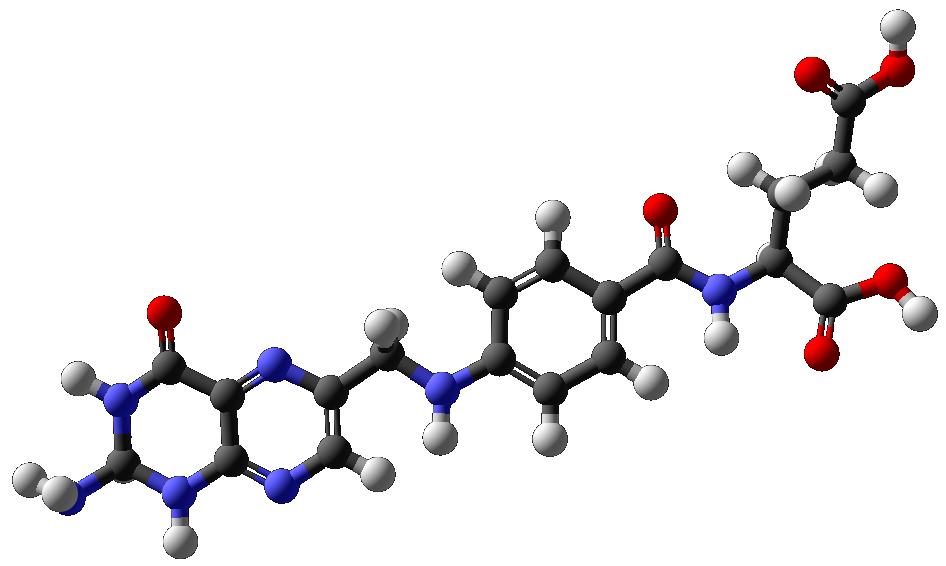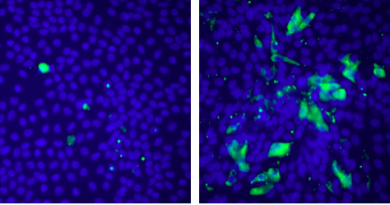Nutritional deficiencies, HIV and DTG brew a ‘perfect storm.’ The good news? There is a simple solution.
A preferred medication for treating HIV infection has been recently linked to a 6- to 9-fold increase in the risk for neural tube defects among babies born to mothers receiving the drug during early gestation. This undesirable effect of dolutegravir (DTG) has caught the interest of Dr. Robert Cabrera and his colleagues at Baylor College of Medicine and University of Alabama at Birmingham, and their investigations have revealed a connection to folic acid (vitamin B9), which also seems to be part of the solution.

“Neural tube defects occur when the development of the neural tube, the embryonic central nervous system that gives rise to the brain and spinal cord, is disrupted during early stages of embryonic development. In humans, this refers to gestational days 17 to 30,” said Cabrera, associate professor in the Center for Precision Environmental Health and the Department of Molecular and Cellular Biology at Baylor College of Medicine.

The body transforms dietary folic acid into folate, which mediates normal neural tube development. Thanks to a number of clinical research studies conducted during the past 50 years, researchers know that dietary folic acid has a protective effect against the vast majority of neural tube defects. This finding led to the implementation of mandatory folic acid fortification of grains and cereal products in 87 countries, including the U.S. since 1999, and consequently to the prevention of the vast majority of neural tube defect cases in these countries.
The body requires folic acid to conduct a number of cellular processes, including the synthesis of the building blocks of DNA, which is essential for proliferating cells. Lacking enough folic acid inhibits DNA synthesis and cell proliferation and can have serious consequences, especially in the growing embryo, which is engaged in active cell proliferation. Folic acid deficiency in the embryo, together with genetic and environmental factors, can result in failed closure of the neural tube and lead to defects.
Identifying the problem and finding a solution
“My colleagues and I have experience studying folate and its interaction with its receptor, which mediates folate effects, so we decided to investigate whether the association between dolutegravir and higher risk of neural tube defects involved folate receptor interactions with folate,” Cabrera said.
Previous evidence has indicated that interfering with the folate receptor can lead to neural tube defects. Studies in laboratory animals have shown that this disruption can result in developmental defects in the offspring. In addition, Cabrera and his colleagues had previously found that the levels of antibodies to folate receptor are higher in serum of mothers with babies with neural tube defects.
Using a variety of laboratory techniques, the researchers discovered in this study that at therapeutic concentrations the drug does disrupt the binding of folate to its receptor. This disruption involves at least four players: folate, folate receptor, dolutegravir and calcium ions. It is known that calcium increases folate binding to its receptor and that doluteglavir has affinity for positively charged ions such as calcium. The researchers propose that dolutegravir alters folate receptor binding by interacting with calcium, and the resultant complex is less soluble and less available to carry its biological functions.

Furthermore, working with the zebrafish animal model, Cabrera and his colleagues also discovered that exposing embryos to dolutegravir starting one to three hours after fertilization completely disrupted embryo development; but, importantly, this toxicity was mitigated by simultaneously providing folate to the embryos. Interestingly, exposing embryos to the drug five to eight hours after fertilization did not alter their development, indicating that early development is the critical period in which embryos are most susceptible to doluteglavir toxicity.
In populations that have folic acid-fortified foods available, women of childbearing age have a reduced risk of having babies with neural tube defects. For instance, the Centers for Disease Control and Prevention report that in the U.S. less than 1 percent of the population is deficient in folic acid. But in other countries such as Botswana that do not have this type of fortified foods, up to 40 percent of the people can be deficient in folate, Cabrera explained.
“In Botswana, up to one-third of the women are HIV-positive and this medication is being used mainly by women of childbearing age. Considering that these same women probably also are deficient in folate and other vitamins and minerals and may have anemia caused by iron deficiency, the combined effect with the medication increases the chance of neural tube defects on their babies,” Cabrera said.
It’s like the perfect storm, but the good news is that there is an easy solution that several countries have already implemented – provide foods fortified with folic acid.”
This work underscores the importance of considering the dietary conditions of individual populations when introducing new medications, as drug interactions with individuals and their offspring may be different depending on the nutritional status of the population.
Read all the details of this work in the journal AIDS.
Other contributors to this work include Jaclyn P. Souder (at Baylor College of Medicine and University of Alabama at Birmingham), John W. Steele, Lythou Yeo, Gabriel Tukeman, Daniel A. Gorelick and Richard H. Finnell, all at Baylor College of Medicine.
Financial support for this work was provided by the National Institute of Child Health and Human Development (R01HD081216-05 and P01HD067244), the National Institute of General Medical Sciences (T32GM008361) and the National Institute of Environmental Health Sciences (T32ES027801).



